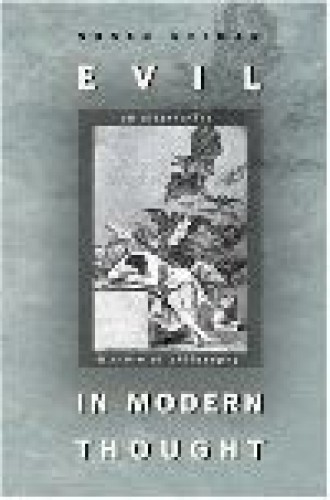CC recommends
Neiman’s stunning history of modern philosophy is now out in paperback. She explains what Leibnitz, Rousseau, Kant and Hegel were really up to: they were trying to figure out why bad things happen. Philosophy, in this book, is an attempt to find a plausible explanation for why the world is not, or doesn’t seem to be, the way it should be. This effort is both urgent and morally problematic, since explanations of evil can also serve to explain evil away.
A man who would cure the world? The phrase seems exaggerated until you meet Farmer, professor of medicine and medical anthropology at Harvard whose most magnificent work is his love of the poor. From his home and clinic in Cange, Haiti, he heals the sick and makes a worldwide impact through Partners in Health. This is a moving and encouraging story of one person’s mission, told with color and vitality by a writer whose nonfiction reads like an absorbing novel.
Remarkably, five Republicans and five Democrats issued not only a unanimous account of the 9/11 events, but a very readable one. The panel’s narrative of what happened on that sky blue morning is chilling. The commission criticizes both the Clinton and Bush administrations. Its main concern is to assess what went wrong, and to offer recommendations to keep anything like this from happening again. Not surprisingly, the 9/11 events stoke the imaginations of conspiracy theorists. The challengers of this report include the Claremont process philosopher David Ray Griffin (The 9/11 Commission Report: Omissions and Distortions, Olive Branch Press).
If the political debate in 2004 seemed narrow, it was—compared, for example, to the campaign of 1912. In that year four powerful figures offered four different views of the role of government and labor in a capitalist economy. The four included two ardent reformers: the charismatic Eugene Debs, who garnered an unprecedented 6 percent of the vote for the Socialists (which turned out to be the high water mark of U.S. socialism) and the feisty Teddy Roosevelt, who proclaimed, “We stand at Armageddon ready to do battle for the Lord.” In a highly readable narrative, Chace argues that the results of the election shaped subsequent political choices and the identity of the two main political parties. TR’s defeat pushed progressives from Republican ranks to the Democrats.
Since the 1960s Walzer has soberly pondered the morality of war, drawing new distinctions within “just war” categories. This collection includes essays written as the U.S. prepared to invade Iraq. Walzer argues that that war was unjust—arms inspectors were accomplishing the goal of containing Saddam. But he also acknowledges an irony: it was the U.S. threat to go to war that put the inspectors back to work. “I won’t pretend to believe that a Pax American . . . is the worst thing to happen to the world today,” he writes, but adds, “it may be the worst thing that could happen to America.”
The comic strip is an unlikely medium for remembering 9/11, but Spiegelman, a Pultzer Prize–winning cartoonist who lives near Ground Zero, is no ordinary artist. In the book Maus, he created a cartoon history of his father’s journey to (and through) Auschwitz (with the Jews portrayed as mice and the Nazis as cats) which captured an astonishing depth and range of feeling. Here he expresses his fears and his inability to “move on.” This cardboard book is also a biting satire of attempts to interpret and memorialize the horror. In one strip, a Spiegelman-like figure buries his head in a U.S. flag, saying: “I should feel safer here, but I can’t see a thing.”










